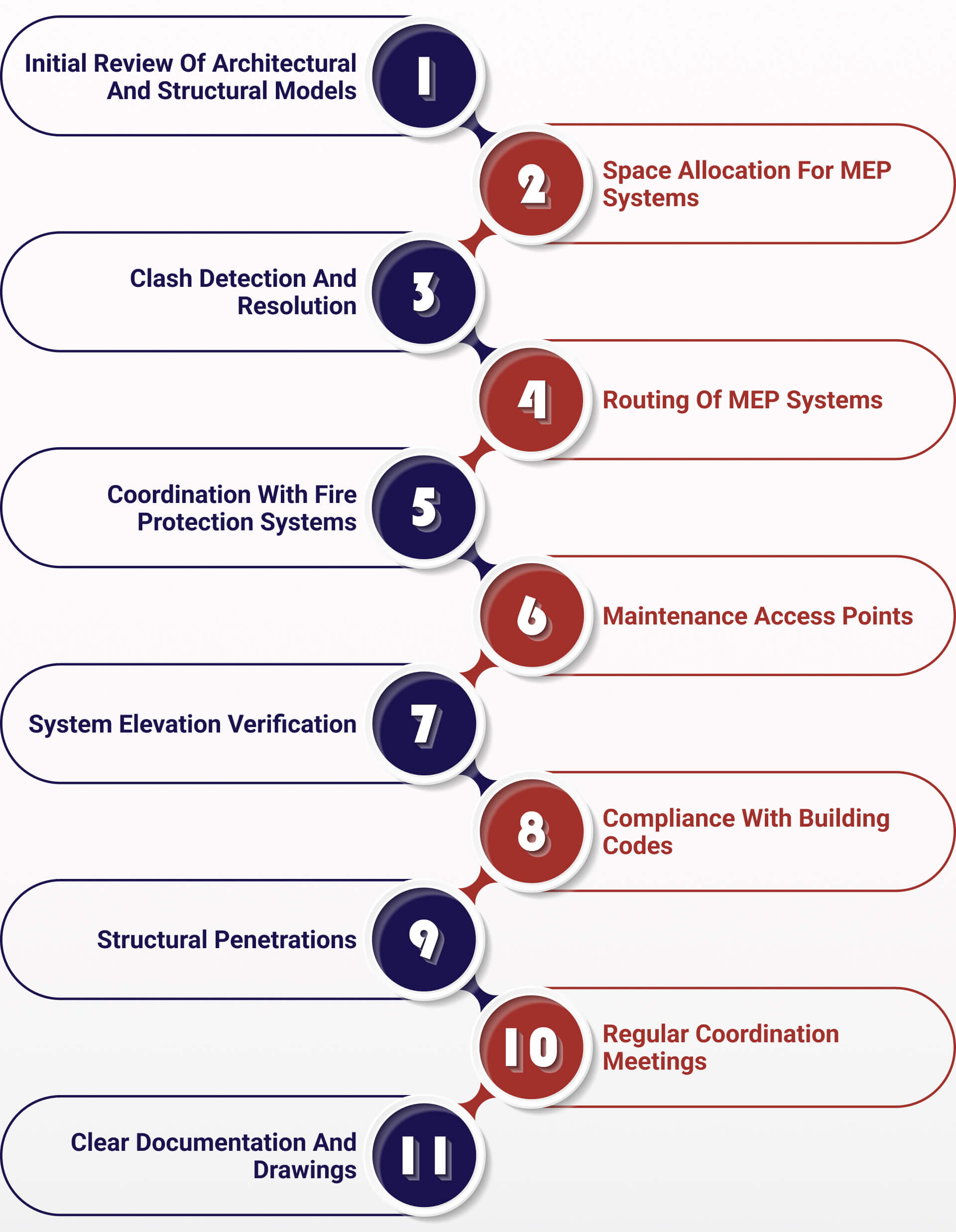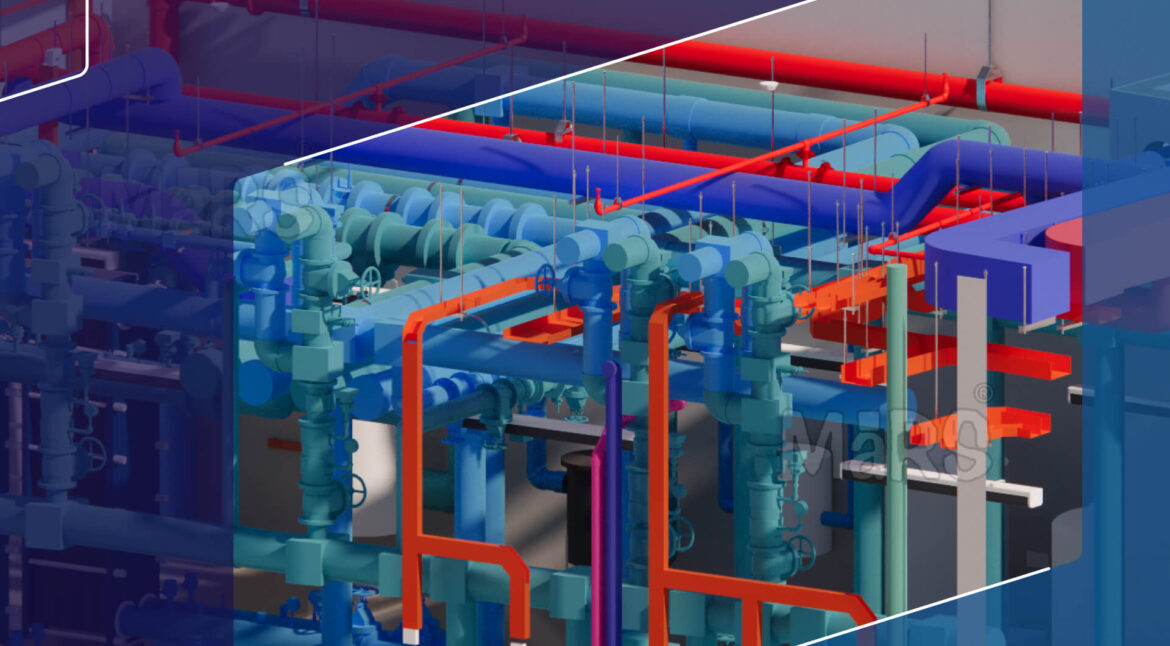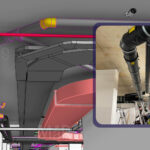MEP coordination is essential to the seamless integration of plumbing, electrical, and mechanical systems into structural and architectural designs on modern construction projects. Effective MEP BIM coordination improves overall project efficiency and reduces the risk of expensive on-site issues. This blog post will cover the value of MEP BIM coordination services, a comprehensive MEP coordination checklist, and how an MEP coordination services provider can simplify the construction process.
Understanding MEP Coordination
MEP coordination is the process of coordinating a building’s structural, architectural, and mechanical elements with its plumbing, electrical, and mechanical systems. To avoid conflicts and problems during construction, it is important to make sure that these systems operate together without interfering with one another.
Why Does MEP BIM Coordination Matter?
Building Information Modeling (BIM) tools are used in MEP BIM coordination to create accurate 3D models of the MEP systems. Through this process, potential conflicts can be noticed and resolved by all parties involved before they arise on-site. MEP BIM Coordination Drawings offer a clear representation of the system architecture, facilitating well-informed decision-making and planning.
Key Elements in MEP Coordination
Organizing the complex connections between structural designs and MEP systems requires a well-structured MEP coordination checklist. This is a comprehensive checklist to guarantee perfect structural coordination and MEP:
MEP Coordination Checklist
The efficient integration of mechanical, electrical, and plumbing systems with a building’s structural and architectural designs is dependent upon effective MEP coordination services. Project stakeholders can optimize system layouts and resolve potential conflicts before construction starts by using MEP BIM Coordination Services. The MEP Coordination Checklist’s main points are explained in detail below, highlighting the value of MEP BIM coordination drawings and the ways that MEP coordination service providers contribute to the completion of successful projects.

1. Initial Review of Architectural and Structural Models
A comprehensive analysis of the architectural and structural models is the first step in the MEP Coordination Checklist. For MEP BIM Services, it’s essential to make sure the most recent models are used, as using outdated or inaccurate models can result in clashes during construction. Teams can avoid conflicts that would require rework by spotting variations early on. The previous review process guarantees a strong basis for subsequent MEP BIM coordination activities.
2. Space Allocation for MEP Systems
In MEP BIM coordination, proper space allocation is essential to prevent conflicts between HVAC ducts, plumbing pipes, and electrical conduits, among other systems. Make sure there is enough room in places like ceiling voids, risers, and service zones by looking over the MEP BIM coordination drawings. Insufficient space can result in inefficiencies or installation delays, which is something that this process helps prevent. Early planning for sufficient space allows MEP Coordination Services Providers to guarantee that every system is installed without difficulties.
3. Clash Detection and Resolution
One of the most important things to do in the Checklist is to use advanced clash detection software like Navisworks. By using this software, conflicts between MEP systems and the building structure can be found and fixed in the digital model before construction. By addressing these problems virtually, MEP BIM Coordination Services help project teams avoid expensive on-site rework.
4. Routing of MEP Systems
To guarantee that MEP coordination in BIM results in effective system layouts, routing is crucial. All MEP systems, including plumbing, electrical, and mechanical ones, must be effectively routed to prevent interference with the building’s structural elements. The suggested system layouts are clearly shown in MEP BIM Coordination Drawings, guaranteeing that every path is designed for energy efficiency, accessibility, and maintenance. Throughout the building’s lifecycle, smooth operations are ensured and the risk of system conflicts is reduced with proper routing.
5. Coordination with Fire Protection Systems
Making sure that MEP systems do not interfere with fire safety layouts is an essential but frequently disregarded aspect of MEP coordination. In this service make sure that the system as a whole is appropriately integrated with sprinklers, alarms, and other fire safety equipment at this stage. The building’s fire safety systems should operate as intended if these components are unrestricted. This cooperation reduces the risk of fire for both the building and its occupants.
6. Maintenance Access Points
Maintenance access points need to be carefully planned for and included in the design of MEP BIM coordination. Plumbing valves, HVAC systems, and electrical panels are examples of systems that need to be easily accessible and require regular maintenance. To avoid problems during routine maintenance or emergency repairs, MEP Coordination Services Providers make sure that the final layout considers these access points. This planning stage lowers future maintenance costs and improves the building’s long-term functionality.
7. System Elevation Verification
It is important to carefully verify the elevation levels of MEP systems during installation to avoid conflicts. The MEP BIM Coordination Services include verifying that the conduit, pipe, and duct elevations correspond with the project’s specifications. Before construction starts, the digital model can be adjusted if any discrepancies are discovered. An installation can go more smoothly when elevation verification is done correctly because it avoids collisions and guarantees that the systems fit inside the allotted spaces.
8. Compliance with Building Codes
Making sure that every system conforms with national and international building regulations is one of the main responsibilities. This means complying with laws related to energy efficiency, safety, and environmental impact. Compliance with legal and regulatory requirements guarantees the building’s safety for its inhabitants. By allowing thorough reviews and modifications in the digital model, MEP BIM Coordination facilitates code compliance.
9. Structural Penetrations
Managing structural penetrations is one of the MEP and Structural Coordination Checklist’s most important components. This involves coordinating any openings needed for MEP systems (like ducts or pipes) with the structural design of the building. MEP BIM Coordination keeps these penetrations in line with the general design, preserving the building’s structural integrity. This action is essential to preventing further structural problems and guaranteeing the building’s stability and security.
10. Regular Coordination Meetings
Successful MEP coordination is based on effective communication. All those responsible, such as contractors, architects, engineers, and MEP coordination services providers, should regularly organize coordination meetings. These gatherings make it easier to make sure that everyone is on the same page and that updates and changes are properly shared. Maintaining constant communication throughout the project makes it possible to quickly recognize possible problems and put solutions in place.
11. Clear Documentation and Drawings
Any construction project’s success depends on maintaining accurate and complete MEP BIM coordination drawings. Both during and after construction, these drawings are used as a point of reference. Providers of MEP Coordination Services make sure that the drawings are current and accurately represent the approved final design. This guarantees correct system installation, keeps contractors on schedule, and offers useful documentation for upcoming maintenance and system upgrades.
Related blog: MEP Coordination: Explanation and Process
Construction teams can avoid costly errors and guarantee a seamless integration of MEP systems with the building’s architectural and structural elements by following a comprehensive MEP Coordination Checklist. To maximize project outcomes and prevent delays, it is essential to use professional MEP BIM coordination services and collaborate with expert MEP coordination service providers.
Conclusion
A thorough MEP coordination process is crucial for the successful integration of mechanical, electrical, and plumbing systems into modern construction projects. By adhering to a detailed MEP Coordination Checklist and utilizing advanced MEP BIM Coordination Services, project teams can effectively identify and resolve potential clashes, ensure proper system routing, and comply with building codes. These steps not only enhance construction efficiency but also reduce costly rework, improve safety, and ensure smooth long-term maintenance. Collaborating with expert MEP Coordination Services Providers ensures that every aspect of the design and installation aligns perfectly with the overall project, resulting in a well-coordinated and successful build.
FAQs on MEP Coordination Checklist
What is the MEP Coordination Checklist?
The MEP Coordination Checklist is a detailed list of tasks and considerations used to integrate mechanical, electrical, and plumbing (MEP) systems with a building’s structural and architectural designs. It ensures that all systems are effectively coordinated to avoid conflicts and ensure smooth installation.
Why is MEP coordination important in construction projects?
MEP Coordination is crucial because it helps integrate different systems—mechanical, electrical, and plumbing—within a building. Proper coordination prevents conflicts, reduces the risk of errors, minimizes costly rework, and ensures that all systems function harmoniously.
What is the purpose of space allocation in MEP Coordination?
Space allocation ensures that there is adequate room for installing MEP systems such as HVAC ducts, plumbing pipes, and electrical conduits. Proper allocation prevents conflicts and allows for efficient system installation, avoiding delays and operational issues.
How is system routing managed in MEP Coordination?
System routing involves planning the paths that MEP systems will take within the building. Effective routing ensures that systems do not interfere with structural elements and are easily accessible for maintenance. Routing plans are detailed in MEP Coordination Drawings.
What role do fire protection systems play in MEP coordination?
Fire protection systems, including sprinklers and alarms, must be integrated into the MEP design without obstructing other systems. Coordinating these systems ensures compliance with safety regulations and effective fire protection.
Why is maintenance access important in MEP coordination?
Maintenance access is critical for ensuring that systems like HVAC, plumbing, and electrical panels are easily reachable for repairs and routine maintenance.
What is system elevation verification, and why is it important?
System elevation verification involves checking that the elevations of MEP systems match the project’s design specifications. This step prevents conflicts during installation and ensures systems fit correctly within designated spaces.
How do Coordination Services ensure compliance with building codes?
MEP coordination services ensure that all systems comply with relevant building codes and regulations by reviewing designs against national and international standards. This compliance is crucial for safety, energy efficiency, and legal adherence.
What tools or software are commonly used in MEP coordination?
Common tools and software used in MEP coordination include Autodesk Revit, Navisworks, and BIM 360. These tools facilitate clash detection, 3D modeling, and coordination of mechanical, electrical, and plumbing systems with the building’s architecture and structure.
How does MEP BIM coordination impact the overall construction timeline?
MEP BIM coordination can significantly shorten the construction timeline by identifying and resolving conflicts before construction begins. This proactive approach minimizes on-site issues, reduces rework, and helps maintain the project schedule.
What are the common challenges faced during MEP coordination?
Common challenges in MEP coordination include misalignment of models, lack of space for systems, unresolved clashes, and communication breakdowns among stakeholders. Addressing these challenges requires careful planning, effective clash detection, and regular coordination meetings.
Can MEP coordination help with sustainable building practices?
Yes, MEP Coordination supports sustainable building practices by optimizing the placement and routing of systems to enhance energy efficiency and reduce resource consumption. Proper coordination ensures that systems are designed to operate efficiently, contributing to a building’s overall sustainability.
What is the difference between MEP coordination and MEP design?
MEP Design focuses on the conceptual and detailed design of mechanical, electrical, and plumbing systems, including system specifications and performance requirements. MEP coordination, on the other hand, involves integrating these designs with the building’s architecture and structure to ensure seamless installation and functionality.
How does MEP coordination impact project cost?
Effective coordination can reduce project costs by preventing costly on-site changes and rework. By identifying and addressing conflicts early in the design phase, projects can avoid delays and additional expenses associated with resolving issues during construction.
What should be included in clear documentation and drawings for MEP coordination?
Clear documentation and drawings should include detailed MEP system layouts, clash detection reports, updated design modifications, and maintenance access points. These documents serve as a reference for construction teams and ensure accurate installation and future maintenance.



